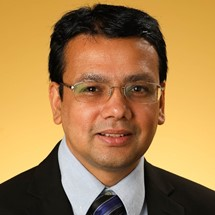BIM Applications for Construction Sustainability
A special issue of Sustainability (ISSN 2071-1050). This special issue belongs to the section "Green Building".
Deadline for manuscript submissions: closed (30 June 2022) | Viewed by 11099
Special Issue Editor
Interests: sustainable design and construction; virtual reality; augmented reality; building information modeling; virtual design and construction; construction education; construction 4.0
Special Issues, Collections and Topics in MDPI journals
Special Issue Information
Dear Colleagues,
Building the information model has created a based process that gives architecture, engineering, and construction (AEC) professionals the insight and tools to more efficiently plan, design, construct, and manage buildings and infrastructure. Building information modeling (BIM) 3D can create animations, renderings, and walkthroughs of the existing model. Integrating BIM with construction sequencing (4D) simulation models benefits participants in terms of planning optimization. Contractors can optimize their construction activities and team coordination. BIM 4D will be able to analyze a) project phasing simulations, b) lean scheduling, and c) just in time (JIT) in this project. BIM cost applications can explore a) real-time conceptual modeling and cost planning, b) quantity extraction to support detailed cost estimates, and c) trade verifications from fabrication models, and d) value engineering at this project. BIM sustainability can analyze a) conceptual energy analysis, b) detailed energy analysis c) sustainable element tracking, and d) LEED tracking in this project. BIM facility management application can analyze a) life cycle BIM strategies, b) BIM As-Builts, c) BIM embedded O&M manuals, and d) data population and extraction.
Building information modeling can facilitate collaborative design and provide new opportunities for planning sustainable buildings. Besides, BIM can provide the basis for building performance simulation with environmental evaluation at the different phases of building use. The costs of construction throughout the life cycle can also be easily calculated based on BIM. The potential of BIM for sustainable construction still has many challenges regarding applying BIM-based environmental performance assessment and optimization on a large scale, since digital technology is rapidly advancing in construction applications, and many sustainability challenges are not adequately addressed. This Special Issue welcomes all technical endeavors, technology developments, case studies, empirical investigations, and experimentations related to building information modeling applications for sustainable construction. Sustainability concerns, social issues, and economic benefits linked to BIM technologies in the AEC industry will be addressed.
The scope of the work includes but is not limited to the following:
BIM-based innovations and sustainability;
BIM-based estimating;
BIM-based scheduling;
BIM-based facility management;
Digital technologies and lean construction;
Green infrastructure and construction;
Automation and robotics;
Life cycle assessment (LCA) and/or life cycle costing (LCC);
Building performance simulation;
Building energy simulation;
Building certification/sustainability assessments;
Visualization and design integration;
API tool development and a parametric scripting.
Dr. Sanjeev Adhikari
Guest Editor
Manuscript Submission Information
Manuscripts should be submitted online at www.mdpi.com by registering and logging in to this website. Once you are registered, click here to go to the submission form. Manuscripts can be submitted until the deadline. All submissions that pass pre-check are peer-reviewed. Accepted papers will be published continuously in the journal (as soon as accepted) and will be listed together on the special issue website. Research articles, review articles as well as short communications are invited. For planned papers, a title and short abstract (about 100 words) can be sent to the Editorial Office for announcement on this website.
Submitted manuscripts should not have been published previously, nor be under consideration for publication elsewhere (except conference proceedings papers). All manuscripts are thoroughly refereed through a single-blind peer-review process. A guide for authors and other relevant information for submission of manuscripts is available on the Instructions for Authors page. Sustainability is an international peer-reviewed open access semimonthly journal published by MDPI.
Please visit the Instructions for Authors page before submitting a manuscript. The Article Processing Charge (APC) for publication in this open access journal is 2400 CHF (Swiss Francs). Submitted papers should be well formatted and use good English. Authors may use MDPI's English editing service prior to publication or during author revisions.
Keywords
- building information modelling (BIM)
- innovations and sustainability
- digital technologies
- lean construction
- sustainable construction methods
- sustainable construction
- building performance simulation
- parametric design
- BIM estimation
- Artificial Intelligence (AI) scheduling
- digital twins





